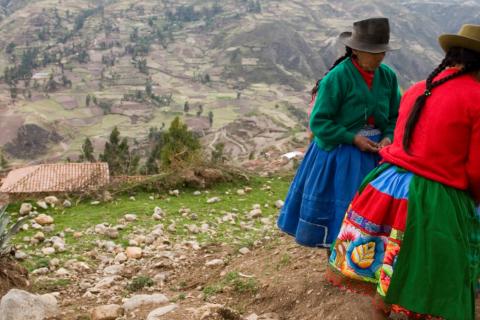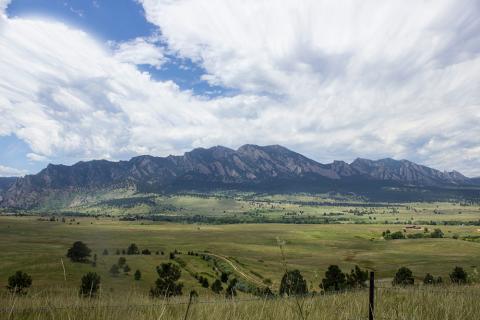In conversation with Heidi Mendoza
The Filipino government can generate new momentum and resources for its longstanding community-based forest management programme, by placing it more centrally in its climate policies. This could benefit forest-dependent communities, but only if mistakes from the past are not repeated, argues Heidi Mendoza. It requires a better understanding of the conditions and constraints for community forestry.
Between 31 October and 12 November, leaders from 196 countries will meet in Glasgow for the 2021 United Nations Climate Change Conference, known as COP26. Alongside the COP, hundreds of experts will join the GLF Climate conference, to discuss ways in which better landscape management can contribute to climate change mitigation and adaptation. In the lead-up to these events, Koen Kusters interviewed several members and partners of Tropenbos International (TBI) about the relationship between community forestry and national climate objectives, as laid down in Nationally Determined Contributions (NDCs). Here he talks to Heidi Mendoza, PhD Candidate at VU Amsterdam, and former staff of TBI’s partner the Forest Foundation Philippines.
The Philippines was one of the first countries in the world to implement a national programme to support community forestry, locally known as community-based forest management (CBFM). Although CBFM can contribute to achieving mitigation and adaptation objectives, Mendoza explains that the Filipino government has not yet given it a central place in its climate plans and policies.
How ambitious is the climate agenda of the Filipino government?
‘I would say it is quite ambitious. It is particularly focussed on developing partnerships with the private sector, to invest in green technologies and projects. These are large-scale ambitions that fit with the current government’s agenda to promote big businesses as drivers of economic growth and the transformation to a low-carbon economy.’
What about the role of forests and CBFM?
‘There is not so much, and not very concrete attention to the role of forests in the country’s climate plans. As a result of lobbying efforts of many civil society organizations, forests are mentioned in the NDC that was submitted to the UNFCCC earlier this year. But they are only mentioned in passing.’
Does this mean that community forestry is not on the government’s radar?
‘Actually, the government has actively supported CBFM for several decades, both financially and operationally. And this continues under the current government. It’s just that CBFM and national climate plans are not well linked to each other in terms of intended outcomes, and priority actions.’
Is it necessary to make that link?
‘Clearly, climate change is enormously complex, and we should be careful not to see CBFM as the sole mechanism to achieve climate-related objectives. Having said that, CBFM can be a substantial component of an effective climate strategy, and that deserves more attention. Moreover, by making CBFM part of the climate agenda, it could be given an extra push. I think that would be desirable, but only under certain circumstances. Care needs to be taken not to repeat the mistakes of the past.’
What has gone wrong in the past?
‘Programmes to implement CBFM have typically been top down. The government and many NGOs have approached it as a blueprint tenure instrument, that can be rolled out over communities. Communities have received some tenure rights, but effective control has stayed with the government, and true participation in the process has been lacking. Participation is mostly controlled by the state, and communities have little to no power to influence processes and decisions. Also, communities’ capacity needs have not been addressed, and many communities have remained completely dependent on external support. The results in terms of conservation and livelihood benefits have often been underwhelming.’
What would need to be done?
‘We need to carefully analyse the bottlenecks, to draw lessons that can be used to develop innovative ways to implement CBFM and improve its outcomes. I believe this will require bottom-up approaches. I also think that NGOs need to take a critical look at their own roles. All too often, they claim to speak on behalf of local and indigenous communities, without giving them space to speak for themselves. Groups that work with communities need to be critical of their roles, so as not to mask the communities’ agendas with their own. I think NGOs need to shift their focus to facilitating communities to effectively raise their voice, so they can express their own views on CBFM, and what is needed to make it more successful.’
Do you think that linking CBFM to the climate agenda could help to achieve these changes?
‘Making it a central component of the country’s climate plans could provide an extra stimulus to improve the local outcomes of CBFM. After all, only if CBFM effectively addresses local needs, will it be able to contribute to climate objectives. So, in an ideal world, linking the two agendas would provide new momentum, and extra resources for a truly bottom-up approach to CBFM. It would involve much more attention to the needs of local communities and indigenous people, giving them the possibility to define and develop CBFM on their own terms. This could be the beginning of a new and more genuine form of community-based forest management. The climate benefits will follow.’
This piece was originally posted to the Global Landscapes Forum website.





